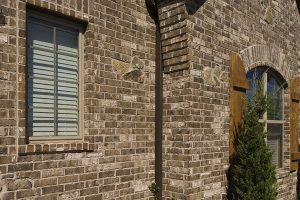Unveiling the Hidden Impact: Winterizing Your Crawl Space for a Cozier Home
In a recent conversation with a homeowner, the discussion veered towards an unusual concern – cold feet while walking around the house, particularly during winter. This peculiar sensation prompted the homeowner to delve into the forgotten space beneath their floor – the crawl space. While the quest for warm feet initiated the journey, it uncovered a myriad of issues that underscored the importance of addressing the winter conditions in this overlooked part of the home.
Crawl spaces inherently tend to be cooler due to their below-grade nature. The open foundation vents, a common feature in many homes, can exacerbate the issue. Building science has revealed that such vents, intended to promote air circulation, can lead to more harm than good, especially in regions where cold outside air seeps into the crawl space. This, combined with the absence of insulation, creates an environment akin to walking outside in winter gear but with sandals on your feet.
Increased Stack Effect in the Winter Months:
The cold temperatures in the crawl space become more pronounced due to the stack effect – a phenomenon akin to a chimney. As heated air rises and escapes, cold air from the crawl space flows up, creating a continuous cycle. This effect is most pronounced during the winter, impacting the overall airflow in the home.
Winter Temperatures in Crawl Space Homes:
The consequences of cold temperatures in crawl spaces extend beyond chilly feet. Some notable impacts include:
1. Cold Floors: The floor above the crawl space becomes the first point of contact for cold air, leading to discomfort.
2. Drafts: Gaps in the floor can result in uncomfortable drafts entering the living space.
3. Inefficient HVAC Systems: Cold air movement through the home makes HVAC systems work harder, increasing heating costs.
4. Moisture Problems: Cold air can carry moisture, leading to condensation and potential damage to crawl space components.
5. Cold or Freezing Ducts and Pipes: HVAC ductwork becomes cold, affecting system efficiency, and pipes may freeze, causing water damage.
6. Pests and Rodents: Cold climates attract pests to crawl spaces, contributing to poor indoor air quality and potential damage.
Winterizing Your Crawl Space:
To address these issues and ensure a warm and comfortable home, consider the following steps:
1. Control Liquid Water: Implement measures to control liquid water infiltration, such as fixing foundation wall cracks, installing drainage systems, and grading the crawl space.
2. Seal Vents and Openings: Prevent outside air from entering by covering foundation vents and air-sealing penetrations to the exterior.
3. Encapsulate the Crawl Space: Isolate the crawl space from the earth using a moisture vapor barrier covering the ground and sealed to the foundation wall.
4. Insulate: Insulate crawl space walls and rim joists to maintain a comfortable temperature and improve energy efficiency.
5. Condition: Maintain appropriate temperature and humidity levels within the crawl space, potentially tying it into the existing HVAC system.
Conclusion:
By taking these steps, your crawl space transforms into an integral part of your home, contributing to a cozier living environment. The checklist provided ensures a systematic approach to this home improvement project, ultimately leading to not only a dry and clean crawl space but also warmer feet and a more comfortable home. Embrace the shift from 20th-century thinking about crawl spaces and discover the multitude of benefits a well-maintained crawl space brings to your home.
